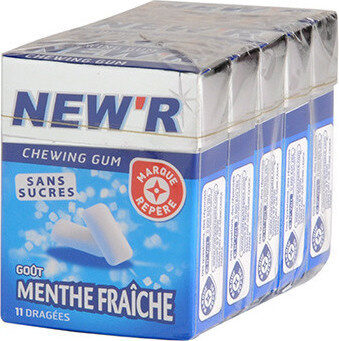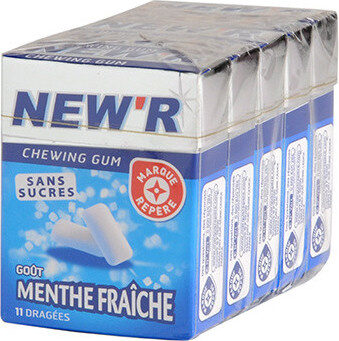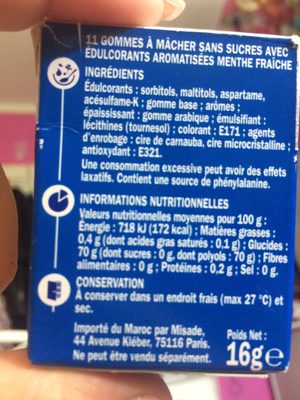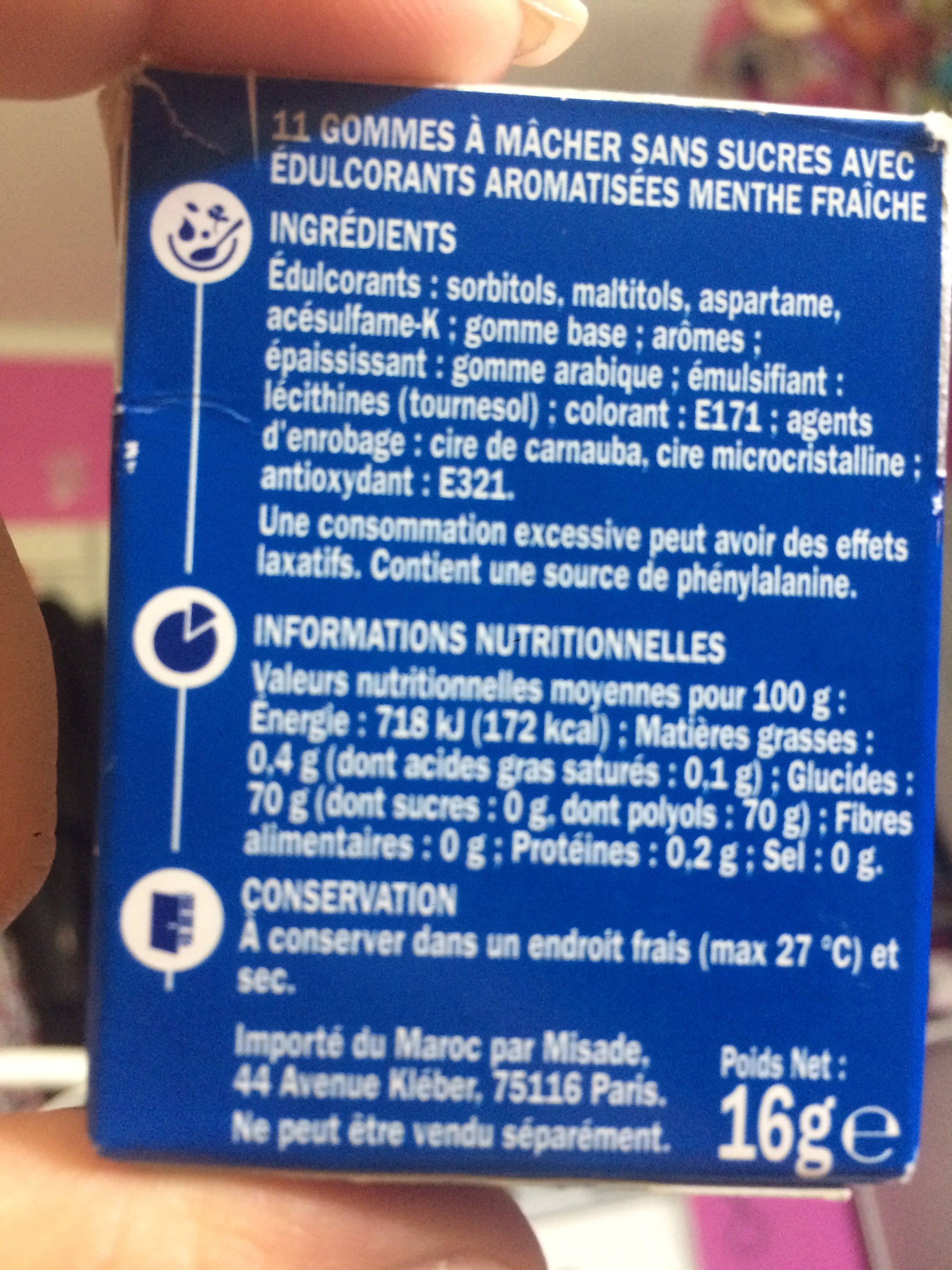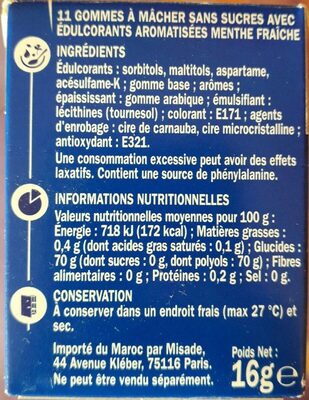Chewing gum menthe fraîche - New r - 5 x 16 g
This product page is not complete. You can help to complete it by editing it and adding more data from the photos we have, or by taking more photos using the app for Android or iPhone/iPad. Thank you!
×
Some of the data for this product has been provided directly by the manufacturer Scamark.
Barcode: 3564700521786 (EAN / EAN-13)
Quantity: 5 x 16 g
Brands: New r, Marque Repère
Categories: Snacks, Sweet snacks, Confectioneries, Chewing gum, Sugar-free chewing gum
Labels, certifications, awards: Low or no sugar, Contains a source of phenylalanine, Excessive consumption can have laxative effects, No sugar
Stores: Leclerc
Countries where sold: France
Matching with your preferences
Environment
Packaging
Transportation
Report a problem
Data sources
Product added on by kiliweb
Last edit of product page on by quechoisir.
Product page also edited by desan, openfoodfacts-contributors, org-scamark, scamark, yuka.sY2b0xO6T85zoF3NwEKvllYZbfzD_G39ayLRxUuq2oiVCb_vb4l3vYb0Eqs.
